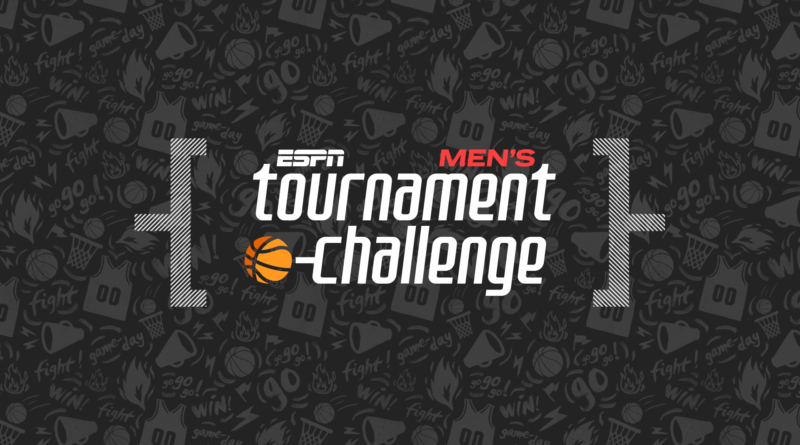10 rules everyone should follow filling out their men's bracket
Which strategy do you employ when filling out your NCAA men’s basketball tournament bracket? Do you favor the eye test? Metrics? Or something more frivolous, like mascot ferocity?
There are 9.2 quintillion possible bracket outcomes. It’s a daunting task, but I have scoured the data so you don’t have to.
In doing so, I have created 10 tried-and-true guidelines based upon more than 40 years of precedent since seeding for the men’s tournament began (1979). I cannot promise you’ll win your bracket, but we can ensure that history is on your side.
1. Advance one First Four team to the round of 32
The First Four began in 2011, and with the exception of 2019, exactly one team that played in the round advanced to the round of 32 (or later) in each year.
First Four teams to reach the round of 32 or later:
2022: No. 11 Notre Dame (round of 32)
2021: No 11 UCLA (Final Four)
2018: No. 11 Syracuse (Sweet 16)
2017: No. 11 USC (round of 32)
2016: No. 11 Wichita State (round of 32)
2015: No. 11 Dayton (round of 32)
2014: No. 11 Tennessee (Sweet 16)
2013: No. 13 La Salle (Sweet 16)
2012: No. 12 South Florida (round of 32)
2011: No. 11 VCU (Final Four)
* NCAA tournament canceled in 2020 (COVID-19 pandemic)
Brackets are open! Head to Tournament Challenge and fill out your bracket now!
2. Do not predict a 16-over-1 upset
You probably already knew this one, but even so, the numbers are staggering: 1-seeds are 147-1 all time vs. 16-seeds, with the lone loss coming in 2018 (UMBC over Virginia). The average margin of victory for 1-seeds in those 147 wins is 24.8 points. More 1-vs.-16 matchups have been decided by 40-plus points (18) than by single digits (15).
3. Predict at least one 12-over-5 upset
Since the NCAA tournament expanded to 64 teams in 1985, there have been 53 12-over-5 upsets for an average of 1.4 per year. Historically, it is more than three times likelier that there will be multiple such upsets (it happened 16 times) than none (five times).
4. Eliminate at least one No. 2 seed prior to the Sweet 16
No. 2 seeds advance to the second weekend of the tournament (63%) at a considerably lower rate than 1-seeds do (84%). Since seeding began in 1979, all four 2-seeds have reached the Sweet 16 in only six of 43 years.
No. 2 seeds in the Sweet 16:
Four teams: six times
Three teams: 14 times
Two teams: 20 times
One team: three times
Zero teams: zero times
Average: 2.5 teams
5. Advance at least one double-digit seed to the Sweet 16
Identifying who Cinderella might be in a given year is always challenging, but one nearly always winds up dancing through the first weekend. Since 1979, a double-digit seed has advanced to the Sweet 16 in 39 of 43 years, including each of the past 14.
Double-digit seeds in the Sweet 16:
Five teams: one time
Four teams: three times
Three teams: 13 times
Two teams: 9 times
One team: 13 times
Zero teams: four times
Average: 2.0 teams
6. Advance at least one team seeded 5 or lower to the Elite Eight
There is nearly always an unexpected team or two remaining by the end of the tournament’s second weekend. Since 1979, at least one team seeded fifth or lower has advanced to the Elite Eight in 40 of 43 years.
No. 5 seeds or lower in the Elite Eight:
Five teams: one time
Four teams: four times
Three teams: eight times
Two teams: 12 times
One team: 15 times
Zero teams: three times
Average: 2.0 teams
7. Do not advance a double-digit seed to the Final Four
It happens just too infrequently to take a chance. Consider this: Since 1979, there have been 1,163 teams to play a tournament game seeded 10th or lower; six of them reached the Final Four. It happened only once between 1979 and 2005, but five times since.
8. Advance no more than two teams from the same conference to the Final Four
Since 1979, only once has a conference sent three teams to the Final Four: the Big East in 1985 (St. John’s, Georgetown and Villanova). But don’t be afraid to double up — there are 24 instances in which a conference has sent two teams to the Final Four.
9. Pick a No. 1 seed to win the national championship
Don’t overthink this one. Since 1979, 26 of 43 national champions were 1-seeds (60%).
National champions by seed:
1-seed: 26 times
2-seed: seven times
3-seed: five times
4-seed: one time
5-seed: zero times
6-seed: two times
7-seed: one time
8-seed: one time
No team seeded ninth or lower has won a national title.
10. But don’t pick Kansas to do it
Kansas, the 2022 national champion, has history working against it. UCLA won seven consecutive national titles from 1967 to ’73, but since, we’ve had only two repeat title winners: Duke in 1991 and ’92 and Florida in 2006 and ’07. The Jayhawks will be a popular pick to win it all, but history says repeating is exceedingly difficult to do.
Data provided by ESPN Stats & Information. Paul Hembekides is a content producer for ESPN’s “Get Up” and the co-host of “#Greeny” on ESPN Radio. You can preorder his and Mike Greenberg’s book “Got Your Number” here.



